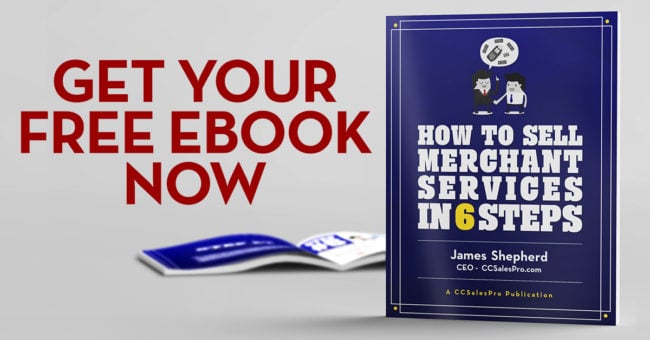Auth & Capture & Settlement Per Item Fee – This is by far the most important and most confusing section of the schedule A. You will recognize all three of these fees as part of the front-end platform. If they offer multiple front-end platforms, be aware that the processor or ISO may have different Schedule A costs for these line items based on which front-end you use.
How to Sell Merchant Services in 6 Steps
If I could write an eBook knowing what I know today and then go back in time and deliver it to myself 10 years ago when I first got into this industry, this would be the one! CLICK HERE TO DOWNLOAD

The first thing you need to do is get a copy of your Schedule A from your ISO or Processor. Next, identify if these three per item fees are combined or separated. For instance, one processor may have a line item called “Auth & Capture” for $0.05 with a $0.01 settlement per item fee. This means the total cost to authorize, capture and settle a transaction using the front-end is $0.06. Another schedule A might show an “Authorization Fee” of $0.03. This looks really good until you see that the “Capture” or “Settlement” fee is separated and costs $0.05, making a total of $0.08 per item.
When you are pricing a merchant, you will simply use the “Transaction Fee” if you are doing interchange plus pricing. Thus, as far as merchants are concerned, they will just see one rate. However, your residuals will be affected by these numbers in a big way. Imagine a portfolio of 100 average merchants processing 300 transactions per month, making a total of 30,000 transactions. If you are charging a $0.10 transaction fee, that one line item is generating $3,000 per month in revenue. If your total per item fee cost is $0.04, the gross margin or profit for this line item will be $1,800 per month. If your total per item fee cost is $0.08, the total monthly profit would only be $600.
Settlement / Batch Fee – Here is another reason that the schedule A is so confusing! There is often a per-item settlement fee and a “per batch” fee. Let me explain the difference. Let’s say a merchant processes 10 credit card transactions in a given day. The “per-item” settlement fee would apply to each of these 10 transactions. However, at the end of the day, the merchant will “batch” or “settle” their terminal, sending the entire batch of transactions to the processor and resulting in an ACH credit to their bank account in that amount.
Almost all processors have a “Batch Fee” and on the schedule A, there is a cost for this. If you charge a $0.30 batch fee, that means the merchant will pay $0.30 every time they batch their terminal, regardless of how many transactions are in that batch. If your schedule A batch fee cost is $0.05, that means you are generating a $0.25 profit every time your merchant batches their terminal.
BIN Sponsorship Cost – There are several ways this one is worded. This line item simply means that the processor is keeping a certain number of basis points before they split the profits with you. The industry standard is in the range of 2 to 6 basis points.
*A basis point is 1/100th of a percent. So one basis point on a $100 transaction is $0.01 ($100 x 1/100th of a Percent.) If a merchant processes $10,000 in volume and the processor has a 4 Basis Point BIN sponsorship fee, this means the processor will keep $4.00 before splitting the profits with you at your residual split percentage.
To be sure, there are many more line items on the Schedule A. Once you understand these primary line items, the rest can easily be explained by your processor. The general idea is that you are setting up pricing for the merchants to process payments. You are creating a fee structure for them, and this fee structure generates revenue. The Schedule A is then used to determine the processor’s “costs” in order to create that revenue, and this cost is subtracted from the free revenue. The resulting profit margin is then multiplied by your residual split in order to find the total monthly residual payment.
Read previous post: How Much Should I Make Selling Merchant Services?
How Much Should I Make Selling Merchant Services?
Read next post: Should I Lease, Rent or Loan the Terminal to the Merchant?
Should I Lease, Rent or Loan the Terminal to the Merchant?